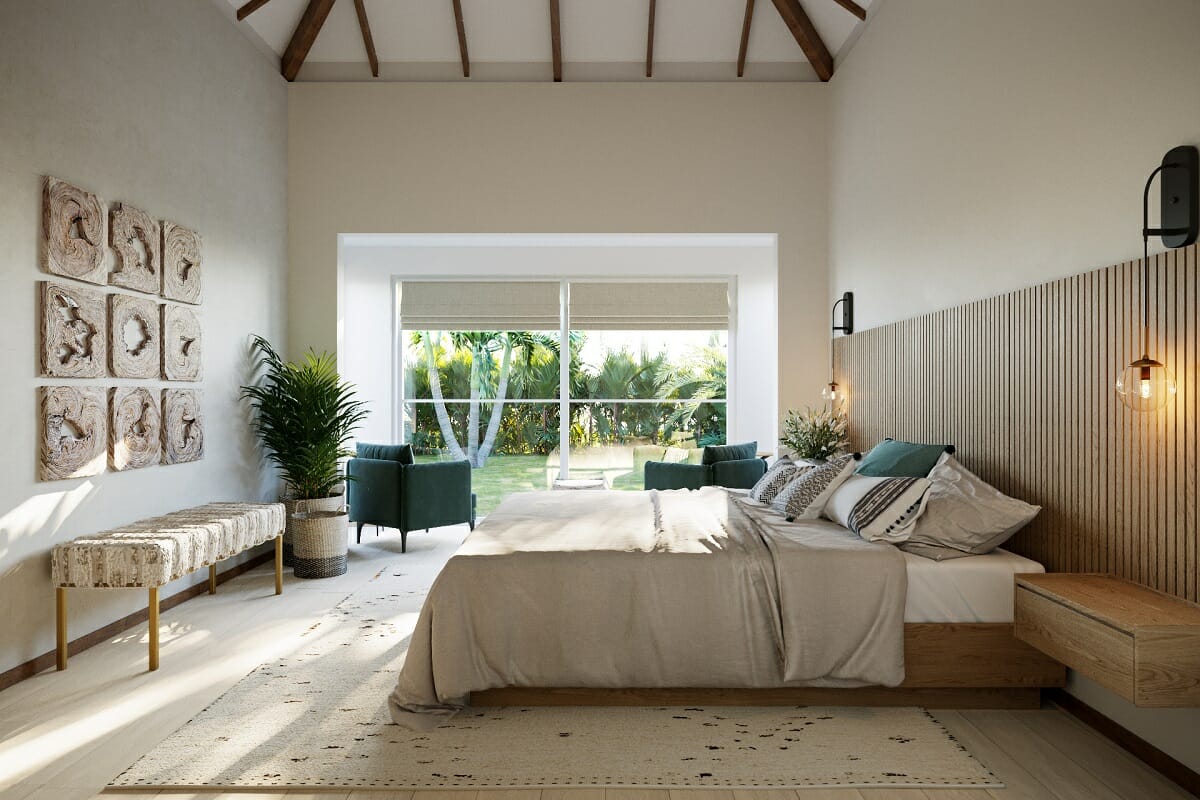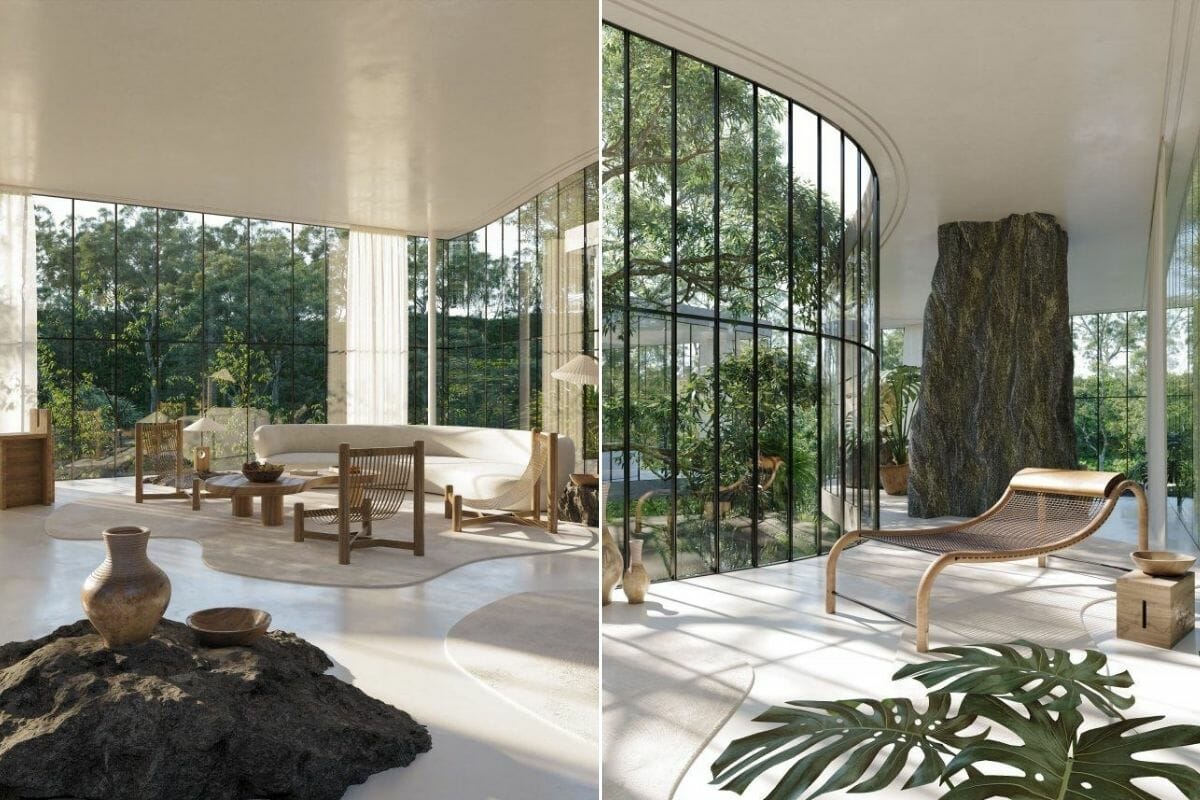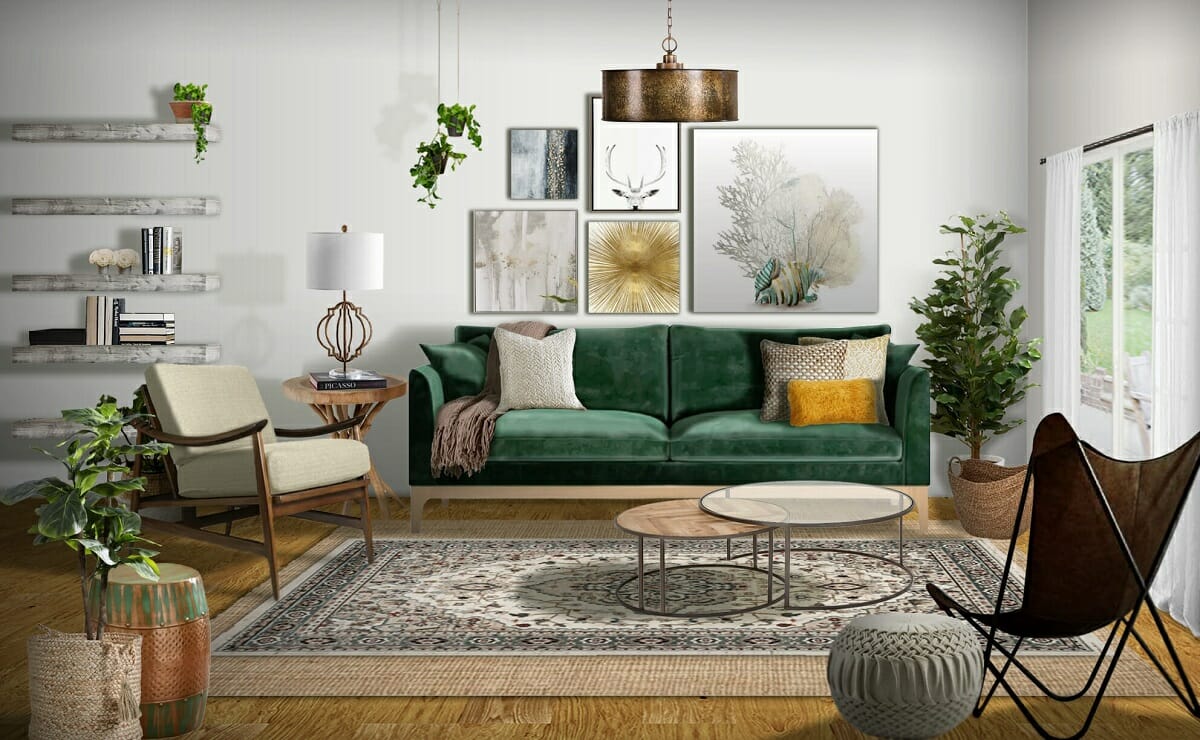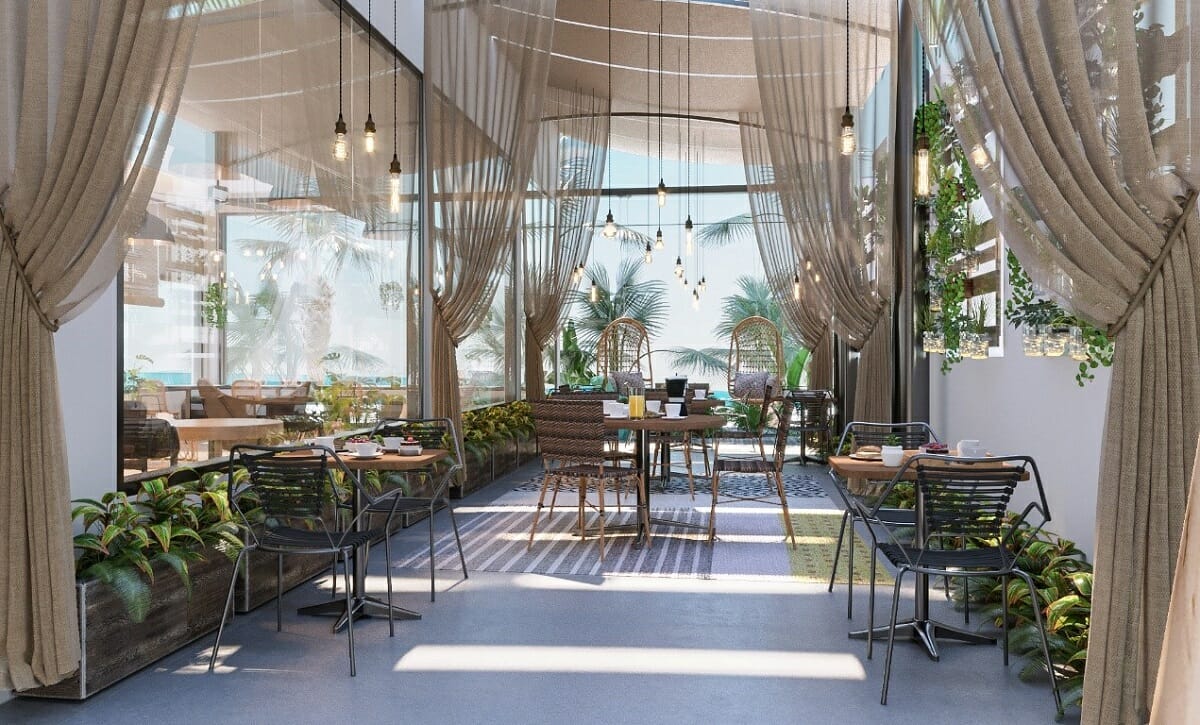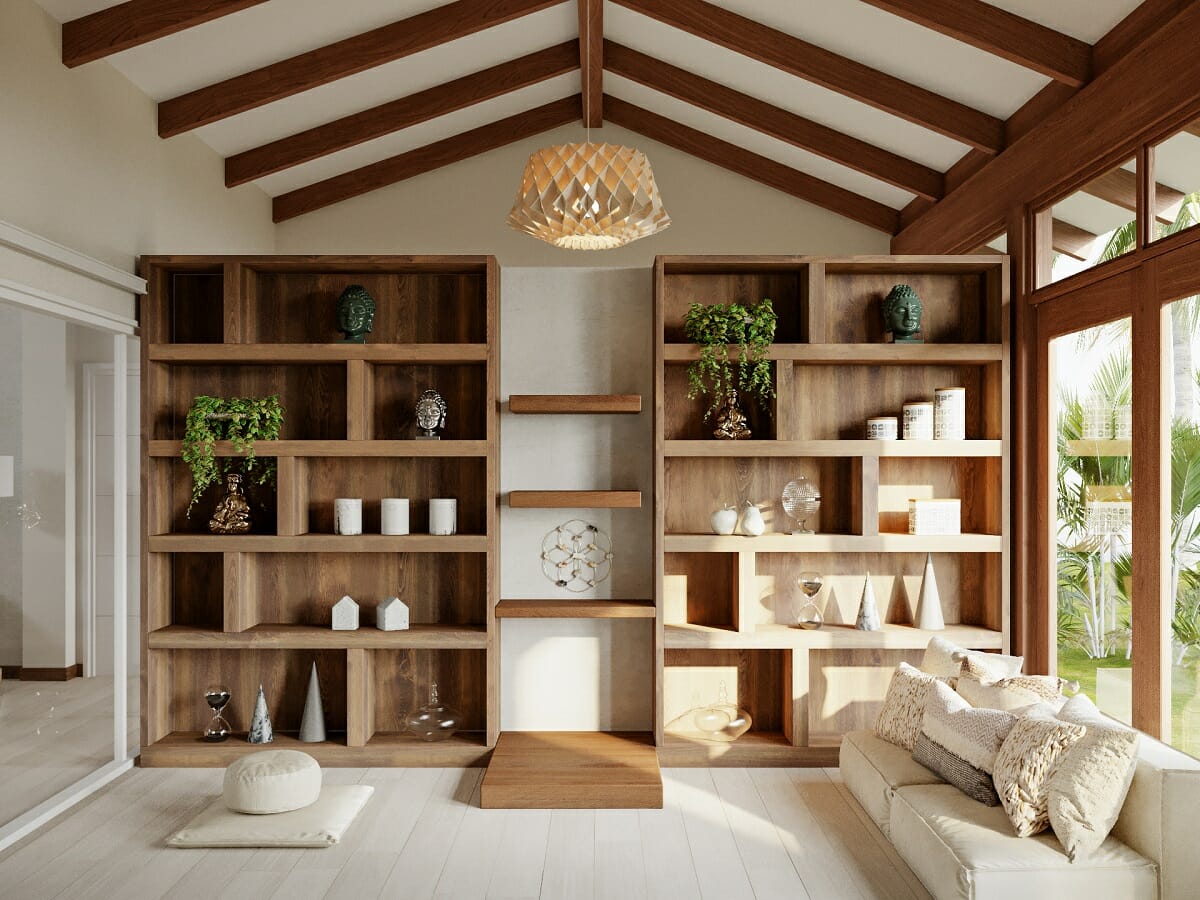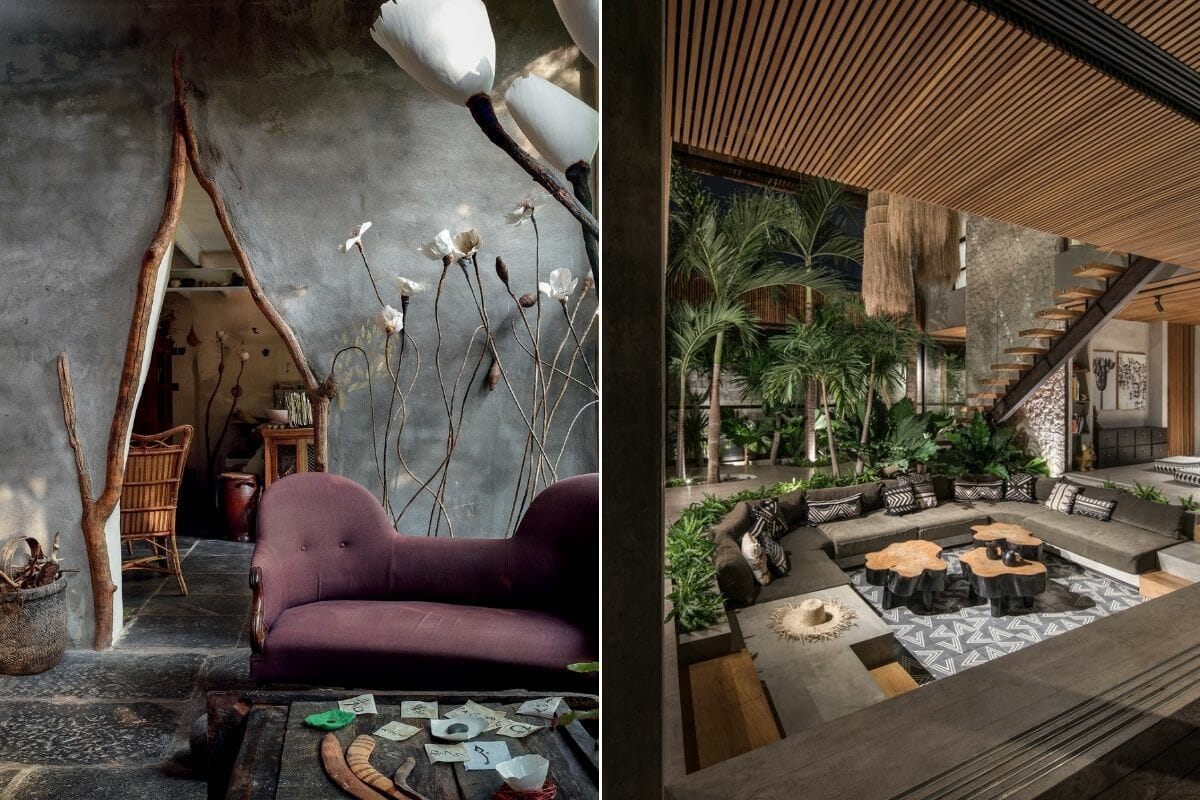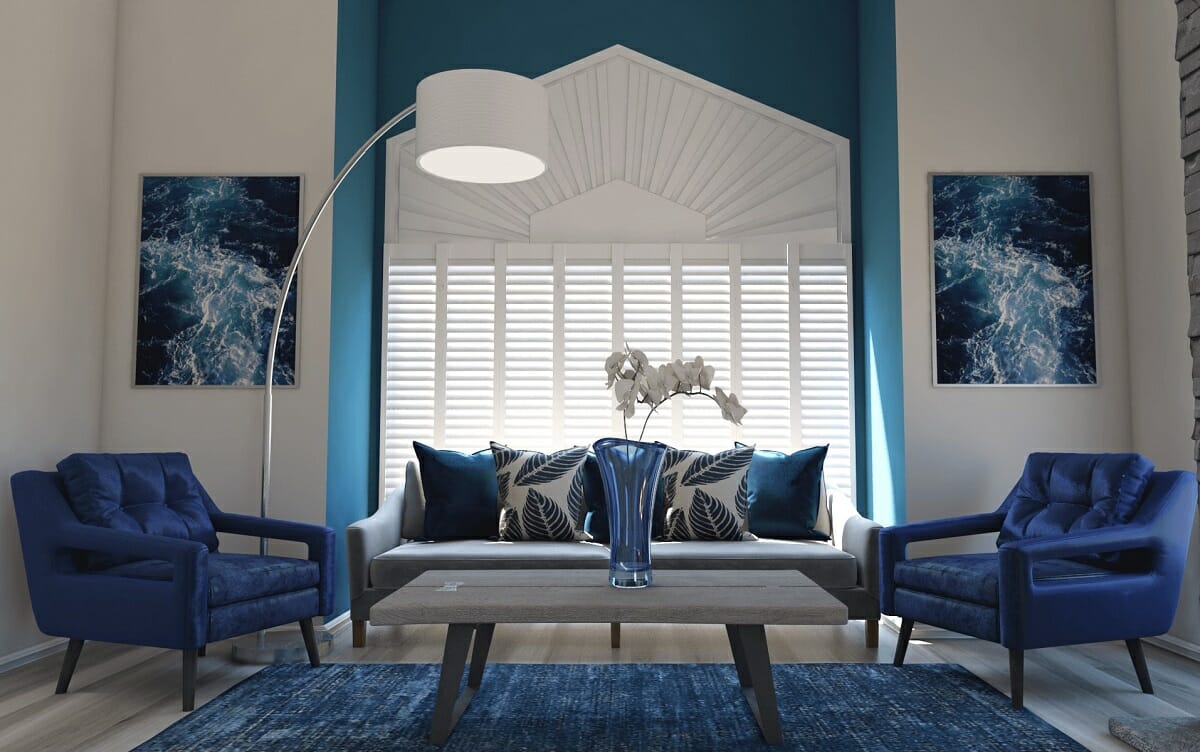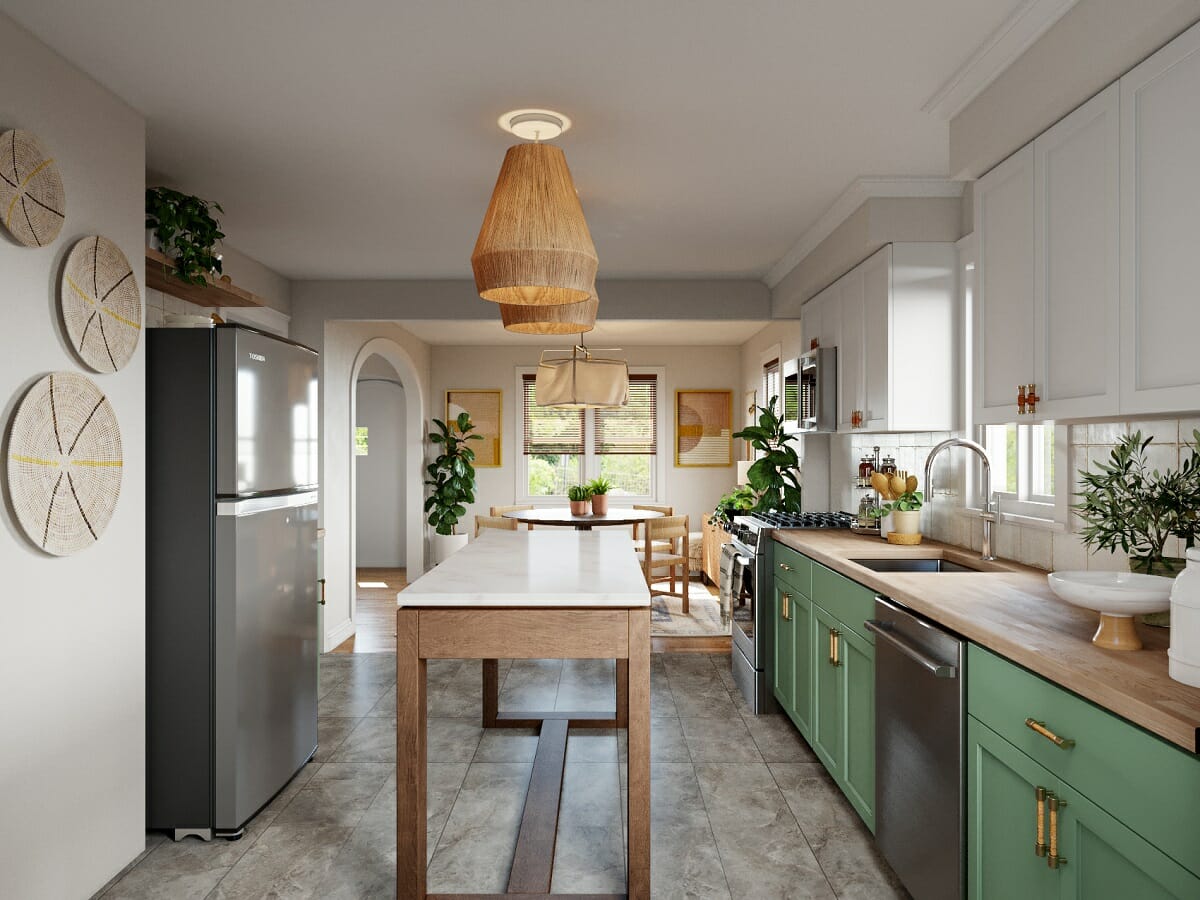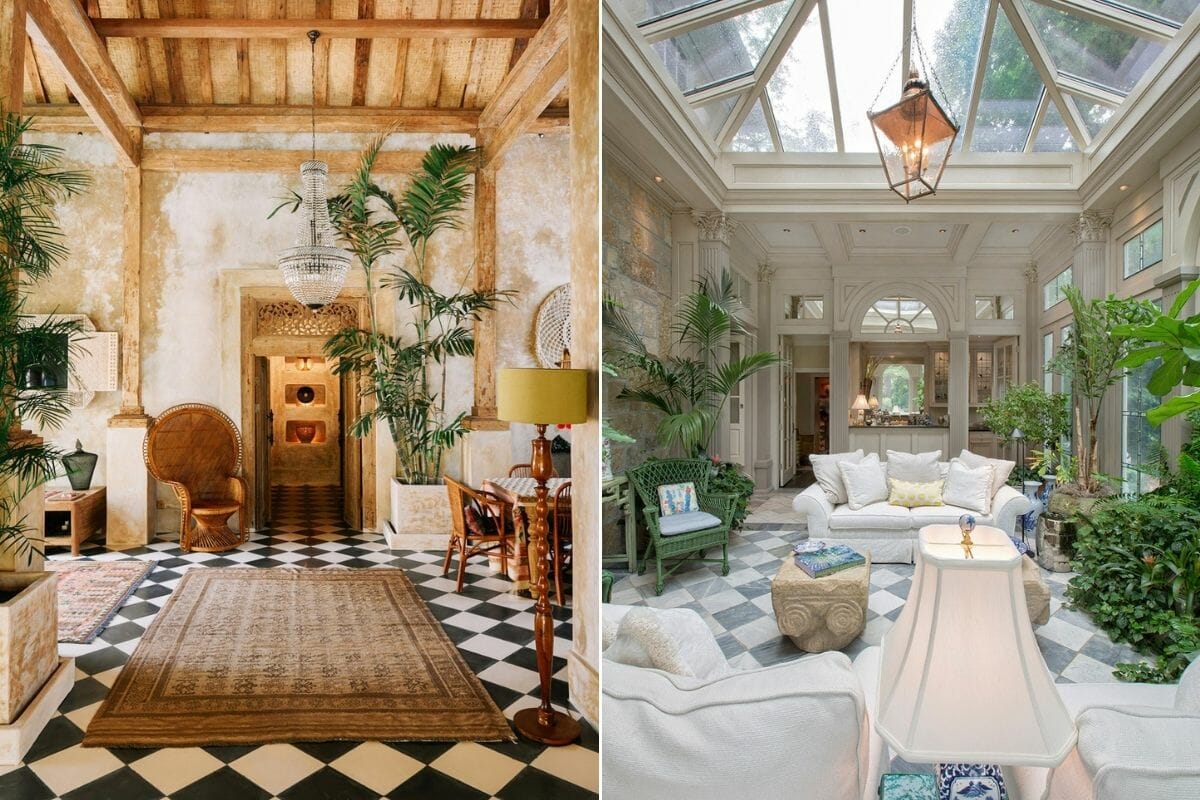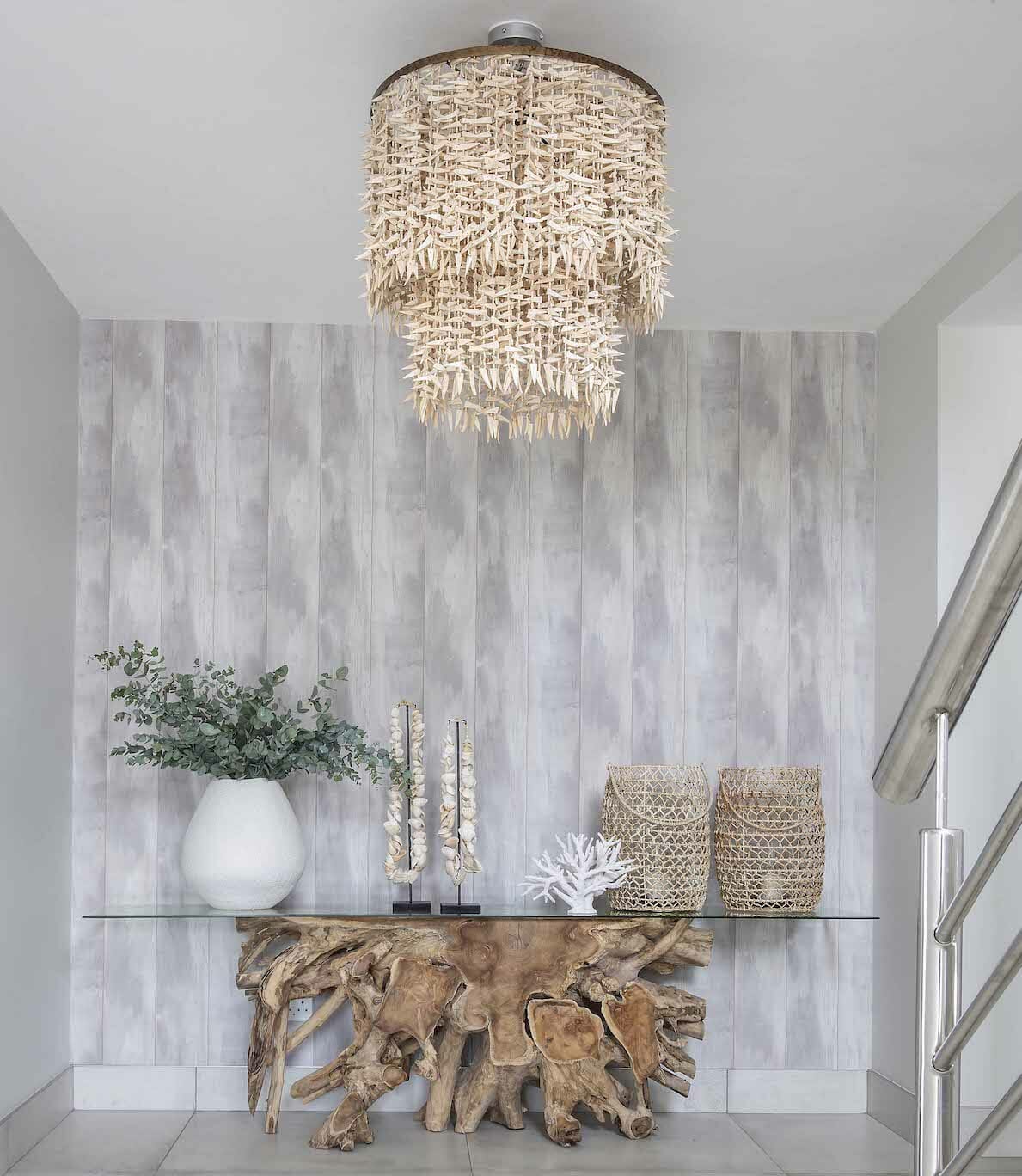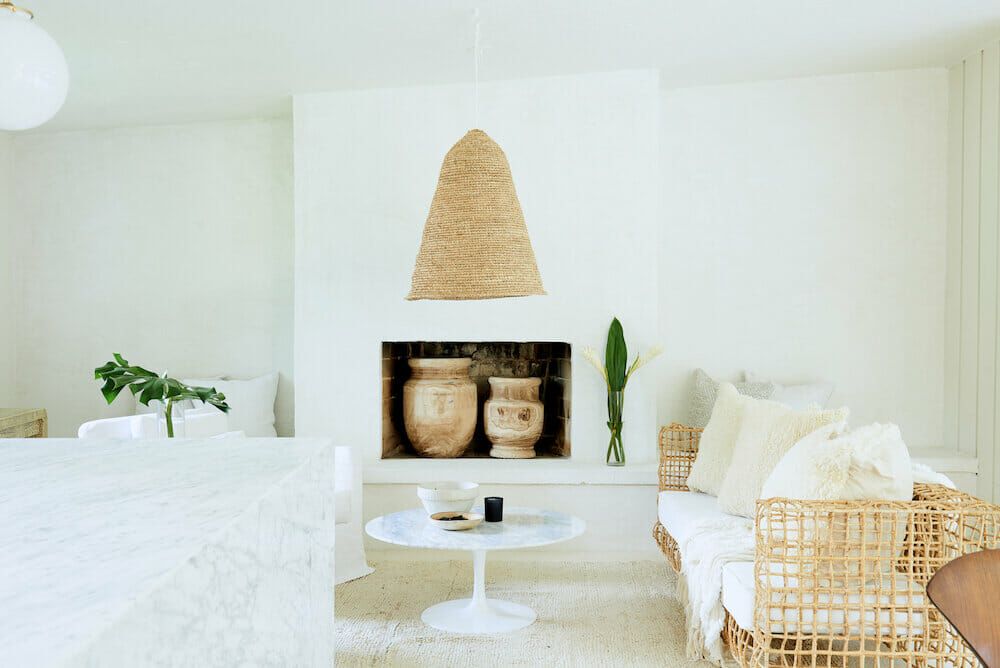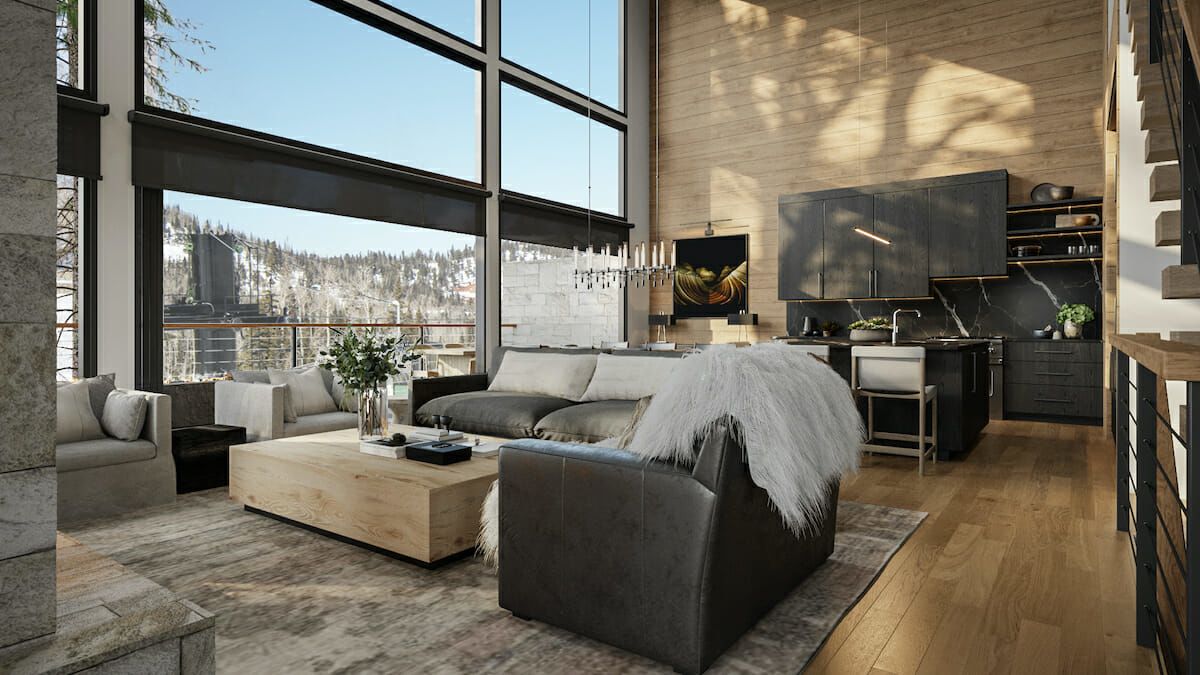
Passionate about life and all things living? If conservation and sustainability are on your mind, we have good news! Interiors are getting a green makeover. It’s called biophilic interior design – an approach that respects the natural world. Plus, everyone can benefit from biophilic interiors. So, follow us as we explore the design trend that (re)connects us with Mother Nature. In just a few steps, you can create such a tranquil home too!
Contents
The Basics of Biophilic Interior Design
Biophilic bedroom interior by Decorilla designer, Wanda P.
The biophilic design trend is about so much more than using plants in interior design. In fact, before creating an interior biophilic design, you must get to know the foundations of the trend. So, let’s dive in to find the answer to “what is the biophilic design concept?”
What is the Biophilic Design Trend?
In order to answer this question, we need to take a closer look at the word ‘biophilia’ first. Biophilia is defined as humanity’s inherent desire to belong to and be a part of the natural world. In truth, it’s all about craving to interact and connect with forms of life beyond ourselves. For that reason, biophilic design is a process that brings the outside world inside by taking inspiration from nature.
Biophilic interiors by Decorilla designers, Kristina B. (left) and Tiara M. (right)
Sustainable interior design is a core concern of the biophilic interior design concept. Additionally, it focuses on the positive effects the natural world has to offer humans’ physical and mental wellbeing. If the focus of an interior design is not on the positive contributions nature has on our productivity and health, it’s certainly not biophilic.
What are the Elements of Biophilic Design?
Home interior with biophilic design by Decorilla designer, Marisa G.
You can also reap the health and wellness benefits of nature – it’s actually quite simple! In fact, all you need to do is keep the three core elements of biophilic design in mind as you create interiors. These elements are, in short:
- The direct experience of the natural world through features like water, fire, air, light, flora, fauna, etc.
- The indirect experience of the natural world through features that evoke nature
- The experience of place and space through our senses like movement, sight, sound, touch, smell, and more
Ready to update your home with biophilic interior design ideas, but not sure where to begin? Schedule your Free Interior Design Consultation to get started with award-winning interior designers today!
How to Pull Off Biophilic Interior Design
Cafe interior with biophilic design by Decorilla designer, Sonia C.
There are certainly plenty of ways in which you can invite nature’s harmony into your home. Today, we’re looking at five inspirational biophilic interior design examples. Armed with these tips, you’ll be able to merge indoor and outdoor spaces very effectively and beautifully.
1. Go for a Natural Color Scheme
Biophilic interior by Decorilla designer, Wanda P.
One of the simplest ways to create biophilic interiors is to implement a nature-inspired color palette. However, it’s important to remember that a natural color scheme isn’t limited to earthy shades and lush greens. As a matter of fact, you have a rainbow of hues at your disposal.
If you’re having trouble picking a palette, start by recalling your favorite natural environment. Perhaps it’s the beach, with its calming shades of beige and blue. Or consider the tones of the ever-changing sky – with colors ranging from blue to pink and grey and everything in-between. Also think of the desert, which shows off sandy, warmer colors.
Seaside-inspired biophilic interior by Decorilla designer, Tijana Z.
Nature’s color palette is limitless! So show off your chosen color scheme by using it for the walls, accessories, furniture, and beyond.
2. Incorporate an Assortment of Plants
Biophilic interior by Decorilla designer, Drew F.
Yes, interior biophilic design isn’t all about plants, but they certainly remain an integral part of nature. Biophilic interiors in public spaces may feature great big trees but at home? It’s likely impossible. However, there are plenty of more practical alternatives available.
Options range from simple potted plants that bring life to dead spaces to hanging plants, kitchen herb gardens, and even living walls. The possible placements and uses of indoor plants are endless.
By adding a selection of greenery to your home, you’ll not only beautify the interior but feel closer to nature. Plus, you’ll reap the health benefits. After all, plants clear the air, help with relaxation and provide increased mental clarity.
3. Mimic Nature through Natural Shapes
Biophilic design elements by Decorilla designer, Anna C.
Interior biophilic design just wouldn’t be complete without pieces that echo nature’s shapes and patterns. Take inspiration from the curves of waves, the ridges formed on wind-blown dunes, the winding vines of a creeper plant. Anything in nature can inspire your interior.
Interior with biophilic style design by Decorilla designer, Kate S.
To incorporate natural shapes in your home, pick irregular-shaped furniture and accessories. For example, look out for handmade pieces from natural materials. You’ll also want to avoid anything with sharp corners and straight lines.
4. Pick Textures Reminiscent of Nature
Biophilic powder room interior by Decorilla designer, Rehan A.
Feel more in tune with nature by investing in decor and furniture that imitate natural materials. This rule extends to floor and wall coverings as well. For example, you want to pick pieces made from all-natural materials – think wood and stone.
These pieces should continue to resemble their original state as much as possible. This is also a great way to explore sustainability. However, be sure to choose responsibly made items and eco-friendly materials above all else.
Not only do natural materials look gorgeous, but they provide a wonderful tactile experience as well. Just imagine walking across a cool stone floor to go and cuddle up on the couch with a faux-fur blanket – heaven! In addition, other materials that conjure up memories of the natural world include linen, hemp, clay, and wicker.
5. Embrace Natural Light & Airflow
Biophilic living room interior design by Decorilla designer, Wanda P.
Sunshine and fresh air are good for more than plants – they’re good for the human soul too. Instantly make a difference to your home’s interior by ensuring all windows are as unobstructed as possible. Make a point of drawing the curtains wide and opening the windows daily. Furthermore, to create even lighter, airier interiors, replace any heavy drapes with light, billowing ones.
Natural light in biophilic interior design by Decorilla designer, Courtney B.
Remember: the great outdoors isn’t a stuffy place. To promote proper airflow throughout your home, ensure that rooms aren’t overcrowded. Moreover, taking these steps will allow you to enjoy a clear view of the garden from the inside. If you don’t have a garden, don’t worry. Simply add plants to your balcony if you have one – and if you don’t, invest in some window boxes to create a pleasant view.
Finally, once the sun has set, ensure your home is fitted with several soft, warm lighting options. There certainly is no better way to end the day than with dreamy lighting filling your home. And with biophilic interior design, it’s all the more possible.
